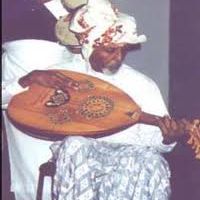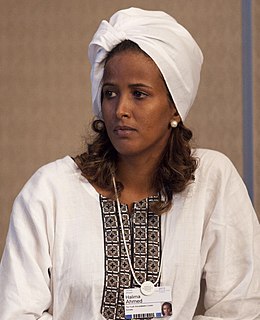 W
WThe culture of Somalia is an amalgamation of traditions in that were developed independently since the proto-Somali era through interaction with neighboring and far away civilizations, including other parts of Africa, the Arabian Peninsula, and Indian subcontinent. The hypernym of the term Somali from a geopolitical sense is Horner and from an ethnic sense, it is Cushite.
 W
WSomali architecture is the engineering and designing of multiple different construction types such as stone cities, castles, citadels, fortresses, mosques, temples, aqueducts, lighthouses, towers and tombs during the ancient, medieval and early modern periods in Somalia, Somaliland and other regions inhabited by Somalis, as well as the fusion of Somalo-Islamic architecture with Western designs in contemporary times.
 W
WThe dabqaad, also known as unsi or girgire, is an incense burner, or censer. With either one or two handles, it is commonly used in Somalia, Somaliland and Djibouti.
 W
WDhaanto is a style of traditional Somali music and folk dance. It is cultural folk dance native to Somali-speaking areas in the Horn of Africa region.
 W
WIndependence Day of State of Somaliland is an annual celebration and a public holiday in Somaliland and Somalia that commemorates the proclamation of independence of on June 26, 1960. In the late 19th century, the territories of what is now Somalia and Somaliland was divided between Great Britain and Italy. During the Second World War, Somaliland was invaded by Italian troops, but Britain eventually regained control of it.
 W
WThe oud is a short-neck lute-type, pear-shaped, fretless stringed instrument, usually with 11 strings grouped in 6 courses, but some models have 5 or 7 courses, with 10 or 13 strings respectively.
 W
WPublic holidays in Somalia are based on two official calendar systems: the Gregorian calendar primarily, and the Islamic lunar calendar for religious holidays.
 W
WAbdullahi Qarshe (1924–1994) was a Somali musician, poet and playwright known as the "Father of Somali music". In 1957 he wrote and composed the Somali National Anthem, Qolobaa Calankeed.
 W
WThis is a list of Somali aristocratic and court titles that were historically used by the Somali people's various sultanates, kingdoms and empires. Also included are the honorifics reserved for Islamic notables as well as traditional leaders and officials within Somali customary law (xeer), in addition to the nobiliary particles set aside for distinguished individuals.
 W
WSomali art is the artistic culture of the Somali people, both historic and contemporary. These include artistic traditions in pottery, music, architecture, woodcarving and other genres. Somali art is characterized by its aniconism, partly as a result of the vestigial influence of the pre-Islamic mythology of the Somalis coupled with their ubiquitous Muslim beliefs. However, there have been cases in the past of artistic depictions representing living creatures such as the golden birds on the Mogadishan canopies, the ancient rock paintings in Somaliland, and the plant decorations on religious tombs in Somalia, but these are considered rare. Instead, intricate patterns and geometric designs, bold colors and monumental architecture was the norm.
 W
WSomali cuisine varies from region to region and is a fusion of different Somali culinary traditions. It is the product of Somalia's tradition of trade and commerce. Some notable Somali delicacies include sabaayad (kimis), laxooh/canjeero (injera), xalwo (halva), sambuusa, bariis iskukaris, and muqmad/odkac.
 W
WSomali literature refers to the literary tradition of Somalia. It ranges from Islamic poetry and prose produced by the region's scholars and Sheikhs of centuries past to works of fiction from contemporary writers.
 W
WMaritime history of Somalia refers to the seafaring tradition of the Somali people. It includes various stages of Somali navigational technology, shipbuilding and design, as well as the history of the Somali port cities. It also covers the historical sea routes taken by Somali sailors which sustained the commercial enterprises of the historical Somali kingdoms and empires, in addition to the contemporary maritime culture of Somalia.
 W
WSomali mythology covers the beliefs, myths, legends and folk tales circulating in Somali society that were passed down to new generations in a timeline spanning several millennia. Many of the things that constitute Somali mythology today are traditions whose accuracy have faded away with time or have transformed considerably with the coming of Islam to the Horn of Africa.
 W
WSomali nationalism is centered on the notion that the Somali people share a common language, religion, culture and ethnicity, and as such constitute a nation unto themselves. The ideology's earliest manifestations are often traced back to the resistance movement led by Mohammed Abdullah Hassan's Dervish movement at the turn of the 20th century. In present-day Somaliland, the first Somali nationalist political organization to be formed was the Somali National League (SNL), established in 1935 in the former British Somaliland protectorate. In the country's northeastern, central and southern regions, the similarly-oriented Somali Youth Club (SYC) was founded in 1943 in Italian Somaliland, just prior to the trusteeship period. The SYC was later renamed the Somali Youth League (SYL) in 1947. It became the most influential political party in the early years of post-independence Somalia.
 W
WSomali studies is the scholarly term for research concerning Somalis and Greater Somalia. It consists of several disciplines such as anthropology, sociology, linguistics, historiography and archaeology. The field draws from old Somali chronicles, records and oral literature, in addition to written accounts and traditions about Somalis from explorers and geographers in the Horn of Africa and the Middle East. The Somali Studies International Association is the primary organization for Somalist scholars. Bildhaan, Somali Studies, Horn of Africa and the Anglo-Somali Society Journal likewise serve as the field's main periodicals. Since 1980, prominent Somalist scholars from around the world have also gathered annually to hold the International Congress of Somali Studies.
 W
WThe flag of Somalia, also known as the Somali flag, was adopted on October 12, 1954 and was designed by Mohammed Awale Liban. The flag was used for the nascent Somali Republic. It was originally conceived and serves as the ethnic flag for the Somali people.
 W
WWomen in Somalia form a key part of Somali society, with clearly defined and important roles in the family and structure. This includes Somali women in the autonomous region and, a self-declared republic that is internationally recognized as an States and regions of Somalia|autonomous regionFederal Member State) of Somalia. According to a poll cited by Face2Face Africa, Somalia has the most beautiful women in Africa. From the time of Ismail Urwayni's proselytizing in 1890, until the Dervish State's defeat by British air bombardment in 1920, women in the strip of land from Jidali, Sanaag in the north, to Beledweyne in the south were referred to as Darawiishaad (plural) or Darwiishad (singular).